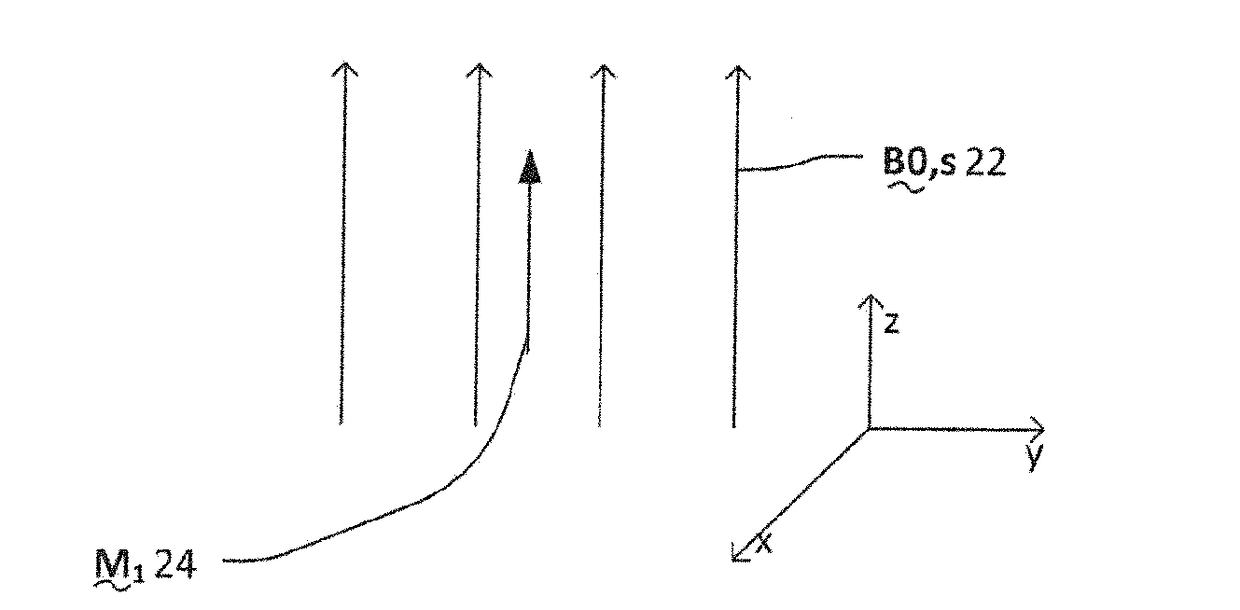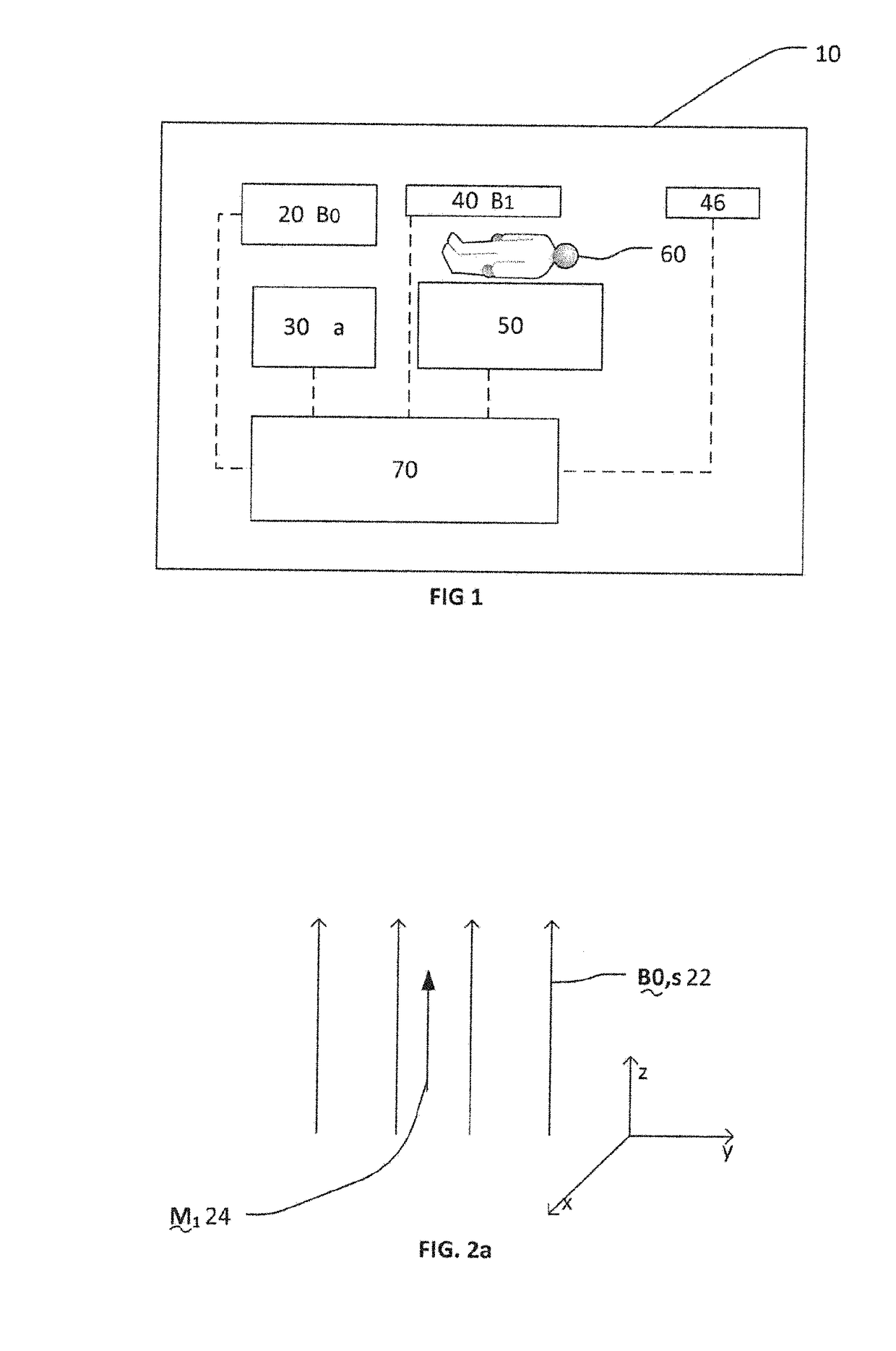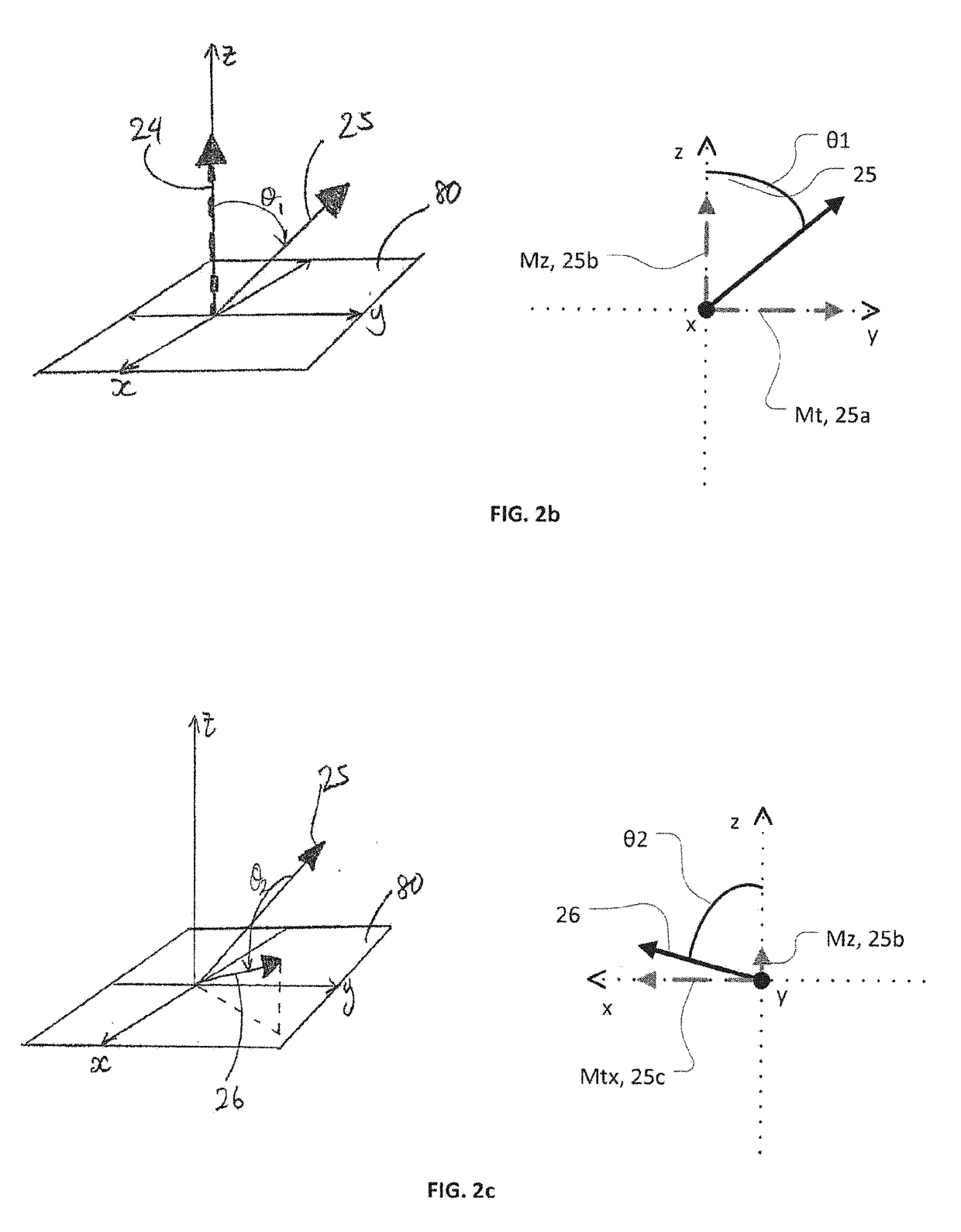Method and system for magnetic resonance imaging
a magnetic resonance imaging and magnetic field technology, applied in the field of magnetic resonance imaging, can solve the problems of inability to pre-compute the activation mode, inhomogeneity of spatial data, imaging artefacts, etc., and achieve the effect of increasing the level of useable signal
- Summary
- Abstract
- Description
- Claims
- Application Information
AI Technical Summary
Benefits of technology
Problems solved by technology
Method used
Image
Examples
Embodiment Construction
[0049]FIG. 1 shows a highly schematic block diagram for a Magnetic Resonance Imaging (MRI) system 10 including:
[0050]a magnetic field producing means 20;
[0051]a magnetic field gradient producing means 30;
[0052]a radio-frequency magnetic field generating means 40;
[0053]an RF receiver 46;
[0054]a positioning means 50; and
[0055]a control unit 70.
[0056]The magnetic field producing means 20 is configured to produce a static uniform magnetic field B0,s, 22 aligned to a longitudinal direction along the z-axis (FIG. 2a). A preferred example of the field producing means 20 is a superconducting magnet system.
[0057]The magnetic field gradient producing means 30 is configured to produce a magnetic field gradient G, 32. This can be thought of an additional magnetic field that alters the magnetic field B0,s to produce a modified magnetic field B0, 24. The gradient is not strong enough to vary the direction of the field, so B0 is always parallel with B0,s in the longitudinal axis. Therefore it suff...
PUM
 Login to View More
Login to View More Abstract
Description
Claims
Application Information
 Login to View More
Login to View More - R&D
- Intellectual Property
- Life Sciences
- Materials
- Tech Scout
- Unparalleled Data Quality
- Higher Quality Content
- 60% Fewer Hallucinations
Browse by: Latest US Patents, China's latest patents, Technical Efficacy Thesaurus, Application Domain, Technology Topic, Popular Technical Reports.
© 2025 PatSnap. All rights reserved.Legal|Privacy policy|Modern Slavery Act Transparency Statement|Sitemap|About US| Contact US: help@patsnap.com



